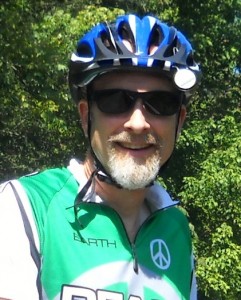There’s an old saying, “If you don’t know where you are going, any old road will take you there.” As anyone who either works in publishing and media—or the church—knows, it’s easy to wonder what the road is and where it is going. So that we arrive where we want to be—and not just anywhere—I have developed the following road map, or maybe mind-map, along with the help of MennoMedia staff, management, board and supporters. It’s a bit of a free-wheeling path, a guide to our hopes and dreams for the future.
1. We will expand our audiences—which are younger and more diverse. Our world is changing. The markets we need to reach are less religious, more ethnically diverse and more technically savvy. We have a niche of being as publisher in the “Post Christendom” or “after Christendom” context—and that’s what our world is becoming. (Christendom refers to the marriage of culture/power/wealth in society.) Reaching this less religious and un-churched market would be what we do on behalf of Anabaptists in the U.S. and Canada. This naturally means that we:
2. Think globally in our markets and audiences. The ability to sell and distribute products and services across the globe is becoming easier all the time, especially with digital product, which does not have to be shipped. We need to back up digital products with tech savvy customer service and better online commerce. This will require that we are:
3. Innovative, with better technical expertise. The uses of technology to create, order and deliver content is going to change continually. (See Tools of Change, a conference I will be attending next week in NYC.) We also need to think innovatively in the types of content we create. This will require us to:
4. Build new content platforms. It is no longer enough to assume that “if we build it, they will come.” Authors, consortiums and aggregators of content are using new platforms, combining web pages, blogs, YouTube, social media and twitter to create, collect and curate information on all sorts of topics. I think that this will be, either for the long-term, or the interim, the way to build and deliver content to audiences and to build communities. We need to think of how to build these platforms in collaboration with new partners who share our set of core values and our niche of content—and figure out how to create income streams where feasible. Which means that in the future we will:
5. Be financially sustainable for the long-run. Monetizing content in creative ways will be part of our future. We also have fund-raising capabilities and supporters that can be enlisted to partner with us. This creativity means we will:
6. Act like a startup—develop a new organizational culture that can continually adapt and learn, to able to produce product in short windows of time. We will “get out of the building” to talk to customers and audiences, so that we can respond to them better. As staff we will:
7. Be continually adaptable. All of us have to learn to adapt our jobs, and the expectations of what we create, to the constantly changing realities of our work environment and audience habits. This may mean new training and skill sets and an atmosphere of continual learning. To learn we will also need to:
8. Expand our brain trust. Who can we draw into our thinking so that we are able to think beyond the conventional? How do we expand our capacity to learn? This will also mean that we:
9. Collaborate with those who are using “free media” outlets or who are already creating content in line with our values. The collaboration with Eastern Mennonite University students who produced the Weaving Life documentary was an excellent example, but there are also many others who are taking up the message and values of Anabaptism in the wider culture. This collaboration will include staff at our denominations and even other publishing peers, such as Brethren Press. We need to join them so that we are:
10. Out in front. Too often, we are playing catch-up either technologically, or in terms of content. We now have nearly all Herald Press books available as e-readers—but the wave long passed over us. In what ways can we be ahead of the game?


 Shine Curriculum introduces Shine Everywhere
Shine Curriculum introduces Shine Everywhere
Recent Comments